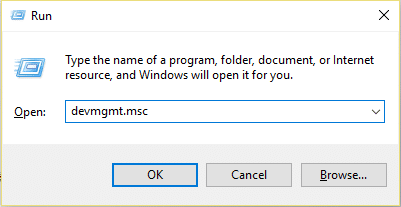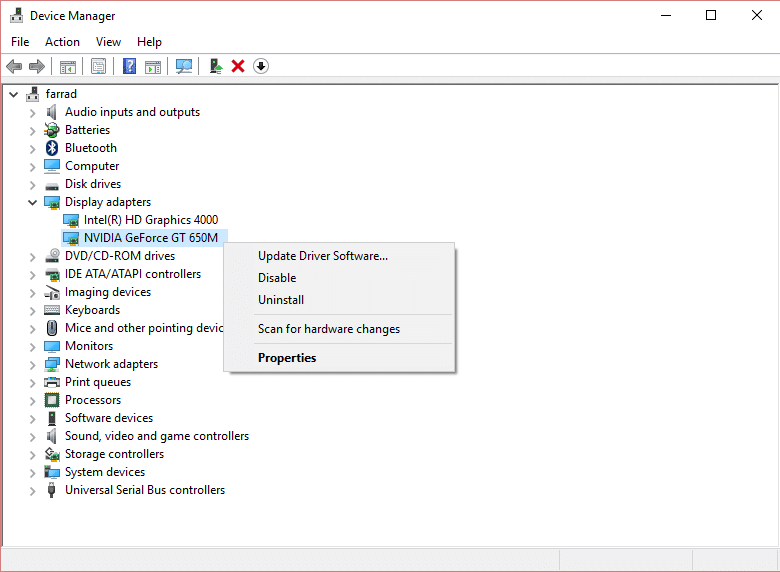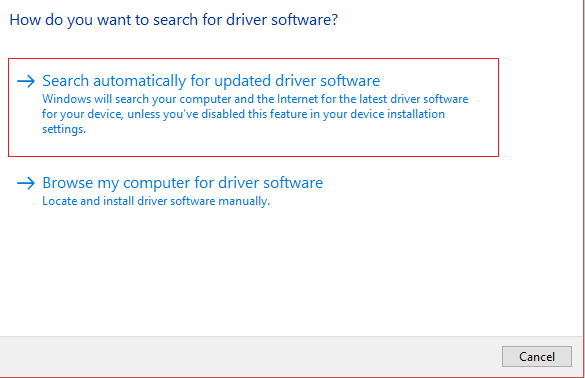If you face any such issues then you can easily update graphics card drivers with the help of this guide. Sometimes updating video drivers help in improving the system performance and fix problems caused due to video driver issues. Anyway, without wasting any time let’s see How to Update Graphics Drivers in Windows 10 with the help of the below-listed guide.
Why should you upgrade Graphics drivers?
It is always recommended to update your Graphics driver up to date for security and stability reasons. Whenever the graphics card manufacturers like NVIDIA or AMD are releasing updates they aren’t just adding features or fixing bugs, most of the time they are increasing the performance of your Graphics card in order to make sure that you can play latest games on your PC.
Why should you upgrade Graphics drivers? 4 Ways to Update Graphics Drivers in Windows 10 Method 1: Update your Graphics Drivers Manually Method 2: Update Graphics Drivers through App Method 3: Download the Graphics Drivers from the PC manufacturer Method 4: Download the Graphics Drivers from System Manufacturer
4 Ways to Update Graphics Drivers in Windows 10
Make sure to create a restore point just in case something goes wrong. Also, before continuing you need to check which graphics card is installed on your system and that you can easily check by following this guide.
Method 1: Update your Graphics Drivers Manually
1.Press Windows Key + R then type devmgmt.msc and hit Enter to open Device Manager.
2.Expand Display adapters then right-click on your graphics card and select Update Driver.
Note: There may be more than one graphics card listed here, one will be an integrated graphics card and the other one will be the dedicated graphic card. You can update the drivers for both of them using this step. 3.Select “Search automatically for updated driver software” and if any update is found, Windows will automatically install the latest drivers.
4.But if the above wasn’t able to find any drivers then again right-click on your graphics card & select Update Driver. 5.This time select “Browse my computer for driver software.”
6.On the next screen, click on “Let me pick from a list of available drivers on my computer.”
7.Finally, select the latest driver available from the list and select Next. 8.If you already have downloaded the Graphics card driver using Method 3 then click on Have Disk.
9.Then click Browse button and navigate to the folder where you have downloaded the graphics card driver, double-click on the .INF file.
10.Click on Next to install the driver and finally click on Finish. 11.Once finished, close everything and reboot your PC to save changes.
Method 2: Update Graphics Drivers through App
Most of the Graphics Card manufacturer includes some type of dedicated app for managing or updating drivers. For example, in the case of NVIDIA, you can easily update your graphics drivers using NVIDIA GeForce Experience. 1.Search for NVIDIA GeForce experience in the Windows Search box.
2.Once the app is launched, switch to the DRIVERS tab.
Note: If you’re using the latest version of NVIDIA Geforce experience then you may be asked to log in with your Facebook or Google account. You need to log-in if you want to download the latest graphics card driver. 3.If the update is available, you will be shown the Download options. 4.Simply click on the green Download button and Geforce experience will automatically download & install the latest graphics driver available for your PC.
Method 3: Download the Graphics Drivers from the PC manufacturer
To download the latest graphics drivers from the PC manufacturer website, first, you need to get your PC model name/number and the operating system (and its architecture) for which you want to download the drivers from the support page of the manufacturer’s website. 1.Press Windows Key + R then type msinfo32 and hit Enter to open System Information.
2.Once the System Information window opens locate System Manufacturer, System Model, and System Type.
Note: For example, in my case, we have the following details: System Manufacturer: Dell Inc. System Model: Inspiron 7720 System Type: x64-based PC (64-bit Windows 10) 3.Now go to your manufacturer’s website for e.g in my case it’s Dell so I will go to the Dell website and will enter my computer serial number or click on the auto-detect option.
4.Next, from the list of drivers shown click on the Graphics card and download the recommended update.
5.Once the file is downloaded, just double-click on it. 6.Follow the on-screen instructions to update your graphics card driver. 7.Finally, reboot your PC to save changes.
Method 4: Download the Graphics Drivers from System Manufacturer
1.Press Windows Key + R and in the dialog box type “dxdiag” and hit enter.
2.Now switch to the Display tab and find out the name of your graphic card.
Note: There will be two display tabs one for the integrated graphics card and another one will be of the dedicated graphics card. 3.Once you have the name of the graphics card installed on your PC, navigate to the website of the manufacturer. 4.For example, in my case, I have the NVIDIA graphics card, so I have to navigate to the Nvidia website. 5.Search your drivers after entering the required information, click Agree and download the drivers.
6.Once you download the setup, launch the installer then select Custom Install and then select Clean install.
7.After the installation is successful you have successfully updated your graphics drivers in Windows 10. Recommended:
Fix VCRUNTIME140.dll is Missing from Windows 10 Fix Task Scheduler Not Running In Windows 10 7 Ways to Fix PUBG Crashes on Computer Reset or Recover Your Gmail Password
That’s it you have successfully learned How to Update Graphics Drivers in Windows 10 but if you still have any queries regarding this tutorial then please feel free to ask them in the comment’s section.


















